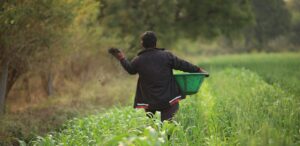Editor’s Note: Dr Belinda Clarke is director of UK-based Agri-TechE (formerly known as Agri-Tech East), Europe’s largest independent membership business connecting farmers and growers with researchers, technologists, entrepreneurs and investors using innovation to enhance the economic growth, agricultural productivity and environmental sustainability of the agri-food value chain. Prior to her current role, Belinda was lead technologist for Biosciences at Innovate UK. Clarke and colleagues went on a trade and investment mission to St Louis, Missouri in the US to discover how it’s built an ecosystem for agritech innovation and investment. Here are her takeaways.
Walt Disney, Chuck Berry and Mark Twain are all children of St Louis, Missouri, known variously as the “Gateway to the West”, “the AgCoast” and even “The Silicon Valley of AgTech.”
The strategic location of the greater St Louis area at the confluence of the rivers Illinois, Missouri and Mississippi has made it a historic epicentre of trading, manufacturing, freight (including grain and fertiliser) and, increasingly agri-tech innovation.
A recent mission to the US, led by UK-based membership organisation Agri-TechE, was supported by the British Government and hosted by the World Trade Centre STL, and enabled a group of UK companies to explore opportunities and similarities between the UK and Missouri innovation ecosystems for agri-tech.
With an agriculture sector worth around $88 billion, Missouri provides a huge market to absorb new agri-technologies and innovations. It is home to over 95,000 farms, averaging just under 300 acres each and, as in the UK, the majority are family-owned with an increasing age demographic.
Impressively, the “Show Me State” produces over 10 commodities at such quantities that they are ranked in the top 10 nationally across the US – including wheat, soybeans, corn, cattle, pigs and cotton. Considering the population of the entire state is smaller than that of greater London, these are impressive outputs indeed.
All this productivity invites for innovation, and there’s particular potential for making better use of data such as via precision agriculture and improved risk management tools.
St Louis has all the hallmarks of an effective agri-tech innovation ecosystem. World-leading research in both the public — via various universities and the Danforth Plant Science Centre — and private sectors — Bayer, rapidly growing “start-up” Benson Hill, and a host of smaller agri-tech firms — underpins the translation of innovation into impact via a vibrant private investment community.
Key to enabling this translation are the activities of The Yield Lab (recently named in the AgFunder Agri-Food Tech Investing Report 2019) report as the fifth most active accelerator fund globally) and the BioSTL BioGenerator.
The latter has invested $26 million in 83 high growth ventures, which have leveraged around $1 billion from other global investors. Collectively seven of the top companies in the portfolio have a combined market cap of over $1 billion and have leveraged over $55 million in federal commercialisation grants.
Worthy of note is the tight collaboration between the city, state, USDA and economic development organisations. A strategic, concerted 20 year effort to develop a position in agri-tech has resulted in the development of focussed centres across St Louis – most significantly being Creve Coeur, historically a farming community and now home to Bayer’s global R&D HQ with nearly a hectare of glasshouse space, making it the largest research glasshouse in North America. This area is poised for growth to rival the 39 North cluster of life science companies.
St Louis is a great example of a plan coming good around realising the value and potential of crop and plant sciences. It has had its visionaries – notably Donald Danforth (after whom the Danforth Centre for Plant Science is named) and Henry Shaw, entrepreneur and botanist who founded the Missouri Botanical Garden, which is home to one of the world’s leading herbarium collections. Fast forward to today, which sees possibly the world’s largest concentration of plant science PhDs with an eye for collaboration and the will to harness technology to improve agriculture and benefit farmers.
Critical to this success has been the partnership between public and private sectors and a strategy to support the growing agri-tech cluster. Rarely is such close-knit collaboration seen – despite widespread appetites to build successful clusters. This is key to the success of the greater St Louis ecosystem.
The UK delegation were looking for partnerships, collaborators, clients and customers, using the St St Louis region as a launch pad to the wider US market. But it was hard not to draw comparisons between the UK’s agri-tech innovation ecosystem and that of St Louis and the wider Missouri state.
Let’s look at the key elements:
- World-leading research? Check.
- Enabling environment for businesses to start and thrive? Check.
- An agricultural industry looking for new technology solutions? Check.
- Mix of large and small agri-tech businesses allowing open innovation and collaboration? Check.
But part of the aim of the mission was to learn lessons, and learn we did. The importance of enabling fiscal environments, the importance of accelerators, and close links with policymakers in the USDA were all very evident. One lunch meeting consisted of the Missouri Dept of Agriculture, the University Vice-Chancellor, senior academics, and businesses, including farmers. It was clear all knew each other, trusted each other, and worked together.
As Missouri’s famous son, Mark Twain once said, “There are two types of people, those who accomplish things, and those who claim to have accomplished things. The first group is less crowded.”
It was a pleasure to spend the week with people in the first group.





